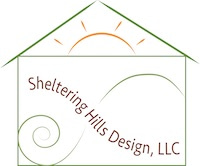Over the past weekend our community saw 7″ of rain within a 24-hour period. Most of that precipitation came down within about 90 minutes. It is easy to recognize this kind of event as a climate-change related phenomena. Such events are becoming more frequent for our area. Rather than a persistent drought, we are likely to see more rain in more intense events like this one. Our community began tracking rainfall in 1895. From 1910 to 1990 there were 10 of the highest rainfalls on record. Between 1991 and 2021 we’ve had 10. The flooding that resulted was deadly and damaging. We need to respond on a personal level with our own home-designs, and on a community level.
A couple of things to consider
A local activist berated city leadership for investing in public structures like a parking garage instead of better addressing climate change (1). This kind of concern–and even righteous indignation– is understandable, but he did not offer any productive suggestions. I think it would be more helpful to point toward what is needed and offer compelling arguments based on data and observation of what is working. For example, a wetlands project on the north side of the city managed the water flow from several neighborhoods and showed remarkable resilience.
Our community needs similar projects which daylight and filter water flows throughout the community. One of the more challenging aspects of these rain events is the channelized flow of water from campus through the middle of the city. For decades this waterway has been sent underground — under businesses. How many cycles of flooded basements and businesses can we carry forward into the future?
Adapting permaculture
Permaculture originated in an area dealing with decades-long droughts. Swales and ponds to catch and store water make a lot of sense in a dry climate. However, in a temperate area with increasing rainfall, design solutions cannot be haphazardly adopted.
I have been advising against placing swales upslope from structures for a while now. Saturating the water table above a foundation will not work in this area any longer. I believe French drains are also insufficient. Rather, earthworks that consistently and reliably move water around and away from foundations make sense. Put your swales and water-catchment earthworks either to the side or down slope to protect your home.
We can use the design process to safeguard our homes AND increase life-sustaining systems. I calculated that in our small yard, the “upslope” generated about 29,790 gallons of water in about 90 minutes. This doesn’t include confirmed runoff from neighboring properties upslope.
People regularly underestimate what is going on. A 50-gallon rain barrel is not sufficient to irrigate a garden. How did the rain gardens fare during the recent events? My suspicion is that they were not especially helpful. (Contact me if you have data to the contrary.)
Rather, a slightly different kind of earthwork can direct water where we want it to go and provide interesting opportunities for cultivating life and living well. Tanks, cisterns, “dry” creek beds, ponds, and other catchments and holding systems can benefit us, and reduce the amount of runoff municipal systems have to deal with, but we need better observation and analysis. We need better design. Ultimately, there are difficult choices ahead.
- To be fair, this person has made many suggestions over the years. The post I saw did not.
Need some advice?
If you would like some help with analysis, conceptual design, and next steps, contact us for a consultation?
Click Here
